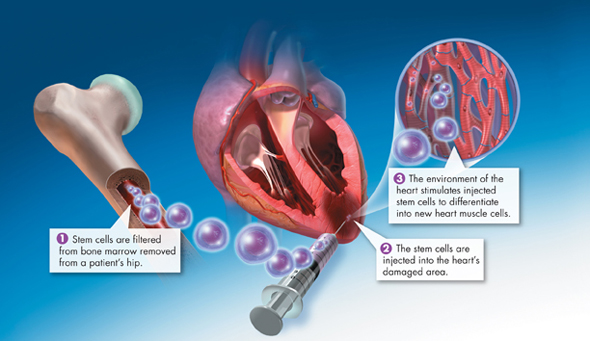
FIGURE 10–21 A Possible Future Treatment for Heart Disease? Stem cell research may lead to new ways to reverse the damage caused by a severe heart attack. The diagram shows one method currently being investigated. Infer How would the fate of the stem cells change after they are moved from the bone marrow to the heart?
ddFrontiers in Stem Cell Research
 What are some possible benefits and issues associated with stem cell research?
What are some possible benefits and issues associated with stem cell research?
Understanding how stem cells retain the capacity to differentiate into so many cell types is an important unsolved problem in biology. Scientists would like to learn exactly which signals tell a cell to become specialized, and how other cells remain multipotent.
Potential Benefits Basic research on stem cells takes on a special urgency in light of the importance it might have for human health. There are many causes of damage to particular types of cells. Heart attacks destroy cells in the heart muscle, strokes injure brain cells, and spinal cord injuries cause paralysis by breaking connections between nerve cells. Given the suffering and death caused by these conditions, the prospect of using stem cells to repair such cellular damage has excited medical researchers.
Many hope to see a day when the damage caused by a severe heart attack can be reversed using stem cell therapy. Experiments using animals suggest that several approaches show promise of success. One approach might be to inject stem cells from the patient's bone marrow into the heart's damaged area, as shown in Figure 10–21. Another approach is to inject embryonic stem cells that might eventually differentiate into new heart muscle cells.  Stem cells offer the potential benefit of using undifferentiated cells to repair or replace badly damaged cells and tissues.
Stem cells offer the potential benefit of using undifferentiated cells to repair or replace badly damaged cells and tissues.
Table of Contents
- Formulas and Equations
- Applying Formulas and Equations
- Mean, Median, and Mode
- Estimation
- Using Measurements in Calculations
- Effects of Measurement Errors
- Accuracy
- Precision
- Comparing Accuracy and Precision
- Significant Figures
- Calculating With Significant Figures
- Scientific Notation
- Calculating With Scientific Notation
- Dimensional Analysis
- Applying Dimensional Analysis




